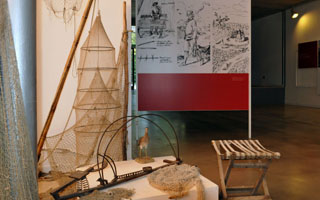The valleys of fish and reeds

In local dialect the term “valley” (val) was for centuries a synonym for marsh: extended lowlands in which drainage from the higher elevations would stagnate for long periods due to the lack of a natural outlet from the Reno river. Most of these areas were drained mechanically and cultivated over the course of the 19th century. It is only recently that some have been allowed to return to their original state.
The valleys were inhabited by plants and animals typical to wetlands, which were used by local inhabitants for subsistence. Fish, frogs and birds were fished and hunted. Swamp vegetation such as reeds (cana, canèla), sedge (pavira, paviròn), soft rush (zongh, busmaról) and arrowhead (quadrèl) provided the raw materials for producing wicker, reed panels (arèla) and brooms, as well as for canning chairs and making fiasco baskets. These materials also helped to meet the daily demand for animal bedding and forage.